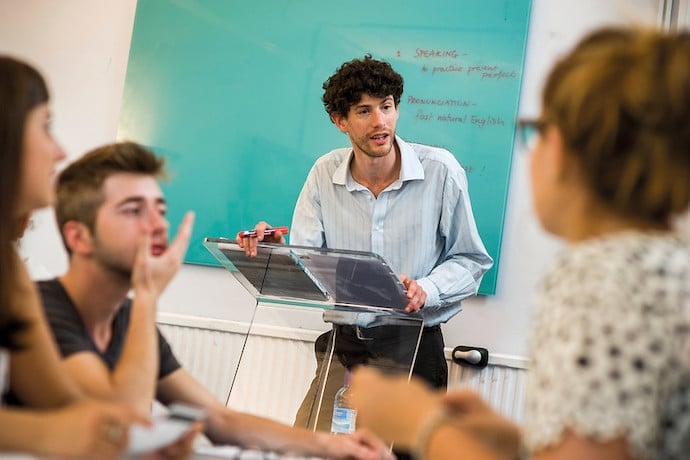During a recent lesson on design thinking with my 8th grade students, we were talking about solving some very large problems like Coronavirus, plastics recycling, and remote learning when the topic of problem-solving itself came up. I posed the question,”Nevermind big problems, how do you go about solving small problems?”, and I got very few detailed answers.
Some mentioned asking an adult for help, while others said they just tend to ignore problems until the last minute. A few were able to solve problems, but were unable to explain their method. In the end, what I found out is that my students didn’t have a clear and consistent process for solving problems, large or small.
Problem-solving is a critical thinking skill that few have been taught, but it can be invaluable in the real-world. Children start off by out-sourcing problems to their parents at a young age, but slowly learn how to work out issues like shoelace tying or finding lost items.
By middle school students are expected to be independent problem solvers. Moreover, the students who have the ability to approach and solve problems tend to thrive academically. The only issue is that, like many critical thinking skills, problem-solving isn’t a part of most K-12 curricula. For my own students, I wanted them to have a stronger sense of agency and independence, so I began to teach how to solve tiny problems.
In my research, I looked for models that would apply to even the smallest of problems. I’ve always liked the quote by Albert Einstein that an hour of problem-solving should require 55 minutes to understand the problem, and 5 minutes to find the solution. One of the best models that I found was published by OECD’s Centre for Educational Research and Innovation (CERI). It included concise methods for breaking down problems of any size.
This problem-solving model asks the solver to follow an eight-step process that focuses primarily on defining the problem. To illustrate the process to my students, I used the tiny example of trying to cross a stream by hopping from rock to rock – a problem I had recently tried (and failed) to solve.
To begin, the solver must understand the problem and explore its boundaries. As I looked at the stream, I noticed that there were some small rocks close to my side of the shore, but there was a larger gap between rocks on the other side. Secondly, the solver must question their assumptions. Looking at the rocks, my assumption was that they were stable and would support my weight. I stepped on a few to test this out, and found that they were anything but stable.
Next are three important parts of the problem-solving process: imagine new perspectives, identify any weaknesses, and then justify a solution. To imagine a new perspective, I imagined what it would be like on the other side of the stream bank going in the opposite direction. I also had to admit I had a few weaknesses in this situation like the fact that my running shoes weren’t waterproof, and there were no other spots to cross the stream close by.
In the end, my justified solution was to step on the few rocks on my side of the stream and then attempt a leap across to the other side. It seemed like the best solution at the time, but I have to admit my jump didn’t go nearly as well as I had hoped. My foot missed the far bank by a solid 6 inches and my shoe got soaked.
Finally, the last part of the process asks problem solvers to identify any weaknesses they may have had, and to reflect on alternatives for the next time this problem arises. I realized that without waterproof shoes, I was at a disadvantage, and boots would have increased my chances of surviving the ordeal with dry feet.
My students then used this model to approach tiny problems in their own lives like finding a missing remote control or constantly forgetting gym clothes. While tiny problems are a small step, they encourage good problem-solving habits like having a clear process and approaching problems rather than avoiding them.
As my eighth grade problem solvers continue to mature, my hope is that they continue to practice these skills and make problem-solving a critical thinking trait. It certainly is a powerful tool that they will hopefully find indispensable as intrepid, worldly adventurers.
Learn More
Problem solving with teenagers
https://raisingchildren.net.au/pre-teens/behaviour/encouraging-good-behaviour/problem-solving-steps
Problem Solving
https://www.sociallyskilledkids.com/social-problem-solving
Problem Solving activities for pre-schoolers
https://www.atlasmission.com/blog/7-insanely-cool-problem-solving-activities-curious-preschooler/

